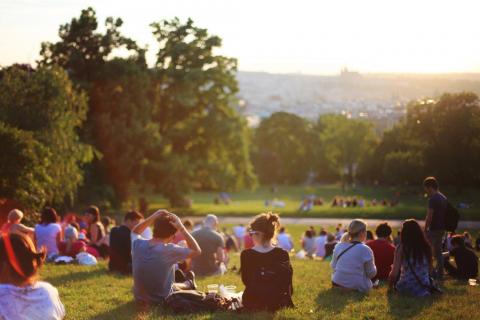What Happened To "Third Spaces?"
Mar 14,2023
In recent years, there has been a noticeable decline in third spaces in society. Third spaces refer to public places that are neither work nor home, but serve as community gathering spaces. These spaces can be coffee shops, libraries, parks, or any other communal area where individuals can socialize, relax, and connect with others. The decline in third spaces can have a negative impact on society, leading to social isolation, decreased community engagement, and increased mental health issues. In this article, we'll explore the lack of third spaces in society and offer solutions for how to combat its negative impact.
The Decline of Third Spaces
Over the past several decades, there has been a shift in how people spend their free time. The rise of technology has led to an increase in remote work and social media, which has made it easier for people to connect online rather than in person. Additionally, the cost of living has risen, making it more difficult for businesses to afford rent in prime locations, leading to a decline in public gathering spaces.
The Impact of This Decline
The decline in third spaces has had a significant impact on society. Without these communal areas, individuals are more likely to feel socially isolated, which can lead to mental health issues such as depression and anxiety. Additionally, the lack of public gathering spaces can lead to decreased community engagement and a decrease in social capital. In other words, without third spaces, individuals are less likely to form connections with others in their community, leading to a breakdown in social cohesion.
Solutions for Combating the Negative Impact
Fortunately, there are solutions to combat the decline in third spaces in society. One solution is to encourage businesses to create more public gathering spaces. Additionally, local governments could incentivize businesses to create third spaces by offering tax breaks or other incentives.
Another solution is to re-purpose existing public spaces to create more communal areas. For example, public parks could be outfitted with seating and picnic areas to encourage people to gather and socialize. Community centers and other public buildings could also be re-purposed to create third spaces that are accessible to all.
Finally, individuals can take action to create their own third spaces. This could include hosting potlucks or other social events in their homes, or creating a community garden or other outdoor gathering space. By taking the initiative to create their own third spaces, individuals can help foster a sense of community and social cohesion.
In conclusion, the decline in third spaces in society has had a negative impact on social cohesion, community engagement, and mental health. To combat this trend, businesses, local governments, and individuals can work together to create more community-based locations. By doing so, we can help create a more connected and cohesive society.





